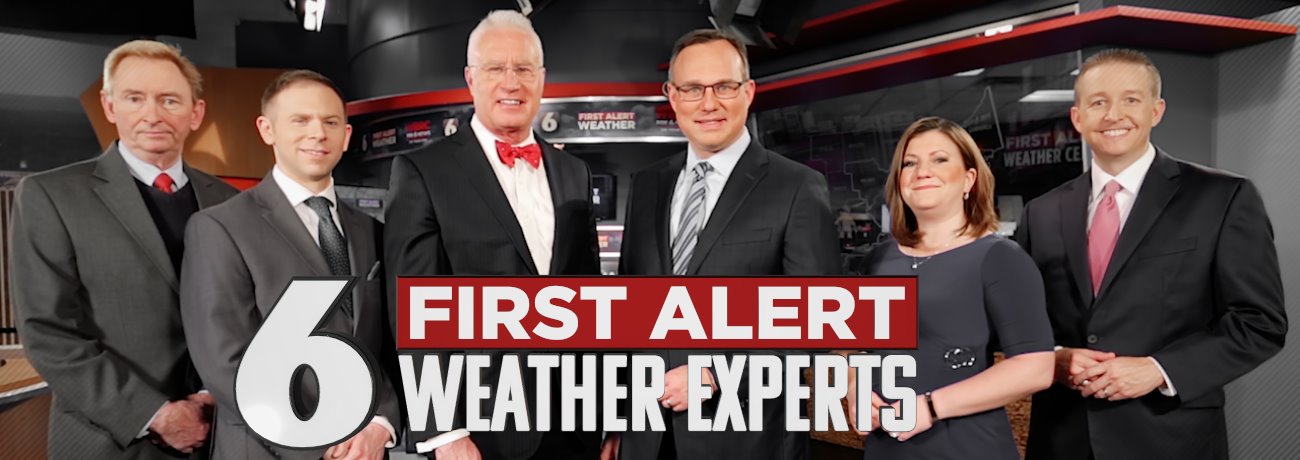When a deadly tornado touched down in Birmingham, Ala., during the late news, WBRC’s coverage led the market in household viewers. Station management says strong First Alert branding and an all-hands approach made the difference.
On Monday night, Jan. 26, at just after 10:30, a tornado touched down in a suburban area of Birmingham, Ala., killing a 14-year-old boy who was sheltering with his family in their basement when a tree fell on their house. Dozens more were injured. The tornado was estimated to be at least a high-end EF-2, with winds up to 135 miles an hour.
The area was under a tornado watch, according to Collin Gaston, the GM of WBRC, Gray’s Fox affiliate in Birmingham, until a tornado warning was issued at just around 10:30 p.m.
The network affiliates in Birmingham were in their late newscasts at the time. “Nobody went on the air guaranteeing a tornado, but the possibility of a tornado was there so we were all alerting,” Gaston says.

“We always treat severe weather as a full station coverage event,” says Josh Morey, WBRC’s marketing director. “When we have severe storms in the forecast, we always staff up and have a plan. Monday’s storm setup was forecasted in the risk zone for low potential of tornados, but the risk was never zero.”
Morey says WBRC’s chief meteorologist, J-P Dice, told viewers in the 5 p.m. news that “all it takes is one, so that’s why we watch storms like this. We had two meteorologists on duty that night, as per our severe weather plan,” Morey says, “and I think that’s what separates us from the rest.”
WBRC’s tornado coverage that night led the market in household ratings. The ABC, CBS and NBC affiliates’ late news started at 10 p.m., while WBRC’s, being a Fox affiliate, started at 9.
“That ratings result was more of a gap between 1 and 2 than what it would be on a normal day,” Gaston says.
Morey says that when a tornado warning was issued, “our team tracked the tornado on radar and began giving our viewers at home very detailed information from our AccuTrack radar systems, which included the timing, street level updates and identifying neighborhoods that needed to get to safety immediately.”
Once the warnings were issued, viewers could turn to any local TV station providing tornado coverage. But more of them chose WBRC.

“It was nice to see that the largest contingent of viewers that were looking to get weather information decided to tune into our station that night,” Gaston says, “I also think there’s a couple reasons why.”
Gaston says WBRC’s strategy for weather coverage is to be accurate, early and give the information often.
“We are a first-alert station,” Gaston says, noting it has been branded that way for at least the past five years.
“To live up to that brand, we have committed to getting out ahead of what could be bad weather situations as early as possible,” he adds. “Then we give accurate information as we interpret the data from radar and then often. We have more newscasts than any other station again because of our Fox affiliate — 65 hours of live news a week.”
Gaston says this isn’t just an on-air strategy, but a digital strategy, too. “Apps, social and desktop are all part of our weather mind set,” he says.
In addition, Gaston says WBRC has six meteorologists, more than any other station in the market. Other investments Gaston mentions are a truck to chase storms and 10 SkyVision cameras.
“We give our meteorologists as many data points as humanly possible in order for them to keep our audiences safe during these types of events,” he says.
Data, live cameras and “colors dancing on a radar screen,” are important tools, Gaston says, but getting the meteorologists out to the site after the storms is “important for anybody on the weather team, to remind them of the power of Mother Nature. If they have the opportunity to visit with anybody that was impacted, that, too, is just another way of connecting with our audiences.”
Morey says he met with chief meteorologist Dice the day after the tornado, and they traveled together to the impacted locations.
“That’s where I filmed several interviews of J-P to see and speak to people directly impacted by the storms, several of whom said they were watching him that night and heard him say to get to safety.”
“It’s a reminder for us of how much responsibility we have as broadcasters to get timely, factual and potentially life-saving information out to the public when we have severe storms,” Morey says. “We do not take that responsibility lightly. It’s the most important thing we do as broadcasters.”
The station produced a promo after the tornado explaining the reason why it’s a First Alert station.
“We wanted to convey to folks that we are here for you, and if there is something bad going on we are going to keep an eye on it and do everything we can to give you all the information you need to be safe,” Gaston says. “The next time something bad looks like it is coming our way or is on the ground, we hope you turn to us because we have been there for you in the past.”
 KCCI, Hearst’s CBS affiliate in Des Moines, Iowa, Iowa’s News Leader, is looking for a dynamic and experienced chief meteorologist to lead our weather coverage. The Chief will guide a team of passionate meteorologists and be actively involved in the editorial process, setting the tone for coverage of weather events. This is an opportunity to keep your eyes on the sky while having your feet planted in one of the country’s most livable cities. Des Moines was ranked No. 7 in Best Places to Live in 2020-21 by U.S. News & World Report. Click here for more specifics and how to apply.
KCCI, Hearst’s CBS affiliate in Des Moines, Iowa, Iowa’s News Leader, is looking for a dynamic and experienced chief meteorologist to lead our weather coverage. The Chief will guide a team of passionate meteorologists and be actively involved in the editorial process, setting the tone for coverage of weather events. This is an opportunity to keep your eyes on the sky while having your feet planted in one of the country’s most livable cities. Des Moines was ranked No. 7 in Best Places to Live in 2020-21 by U.S. News & World Report. Click here for more specifics and how to apply.






Comments (0)
Reader Interactions